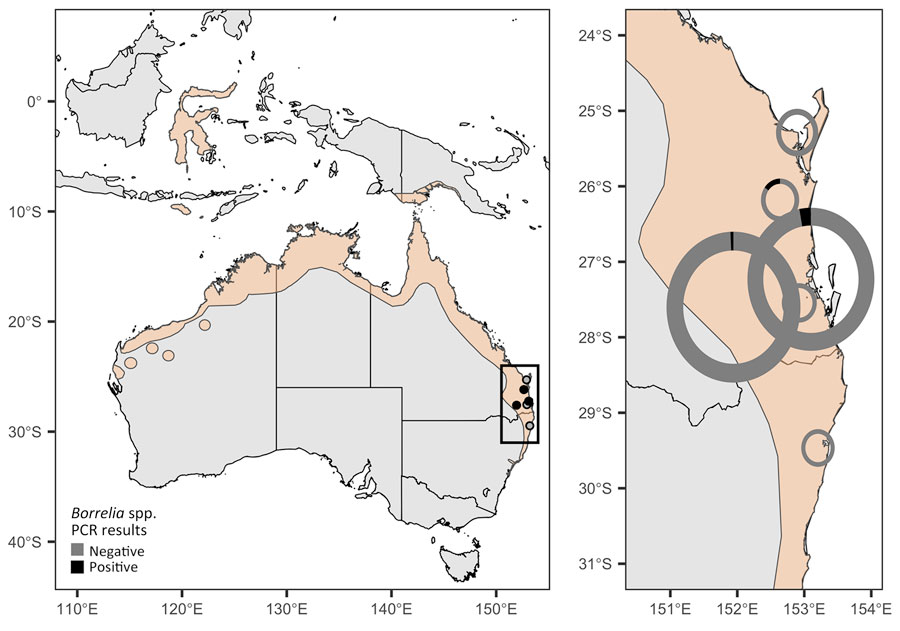Volume 31, Number 7—July 2025
Dispatch
Borrelia Lineages Adjacent to Zoonotic Clades in Black Flying Foxes (Pteropus alecto), Australia, 2018–2020
Figure 1

Figure 1. Sampling sites in eastern Australia (Queensland and New South Wales) of Borrelia lineages adjacent to zoonotic clades in black flying foxes (Pteropus alecto), Australia, 2018–2020. P. alecto geographic distribution (beige shading) is shown as defined by the International Union for Conservation of Nature. Circles are colored by the presence or absence of Borrelia spp. infections detected in blood samples from bats at each site. Black box at left indicates area enlarged at right, showing donut plots with the fraction of PCR-positive samples in black; circles are scaled by sample size.
Page created: May 09, 2025
Page updated: June 25, 2025
Page reviewed: June 25, 2025
The conclusions, findings, and opinions expressed by authors contributing to this journal do not necessarily reflect the official position of the U.S. Department of Health and Human Services, the Public Health Service, the Centers for Disease Control and Prevention, or the authors' affiliated institutions. Use of trade names is for identification only and does not imply endorsement by any of the groups named above.